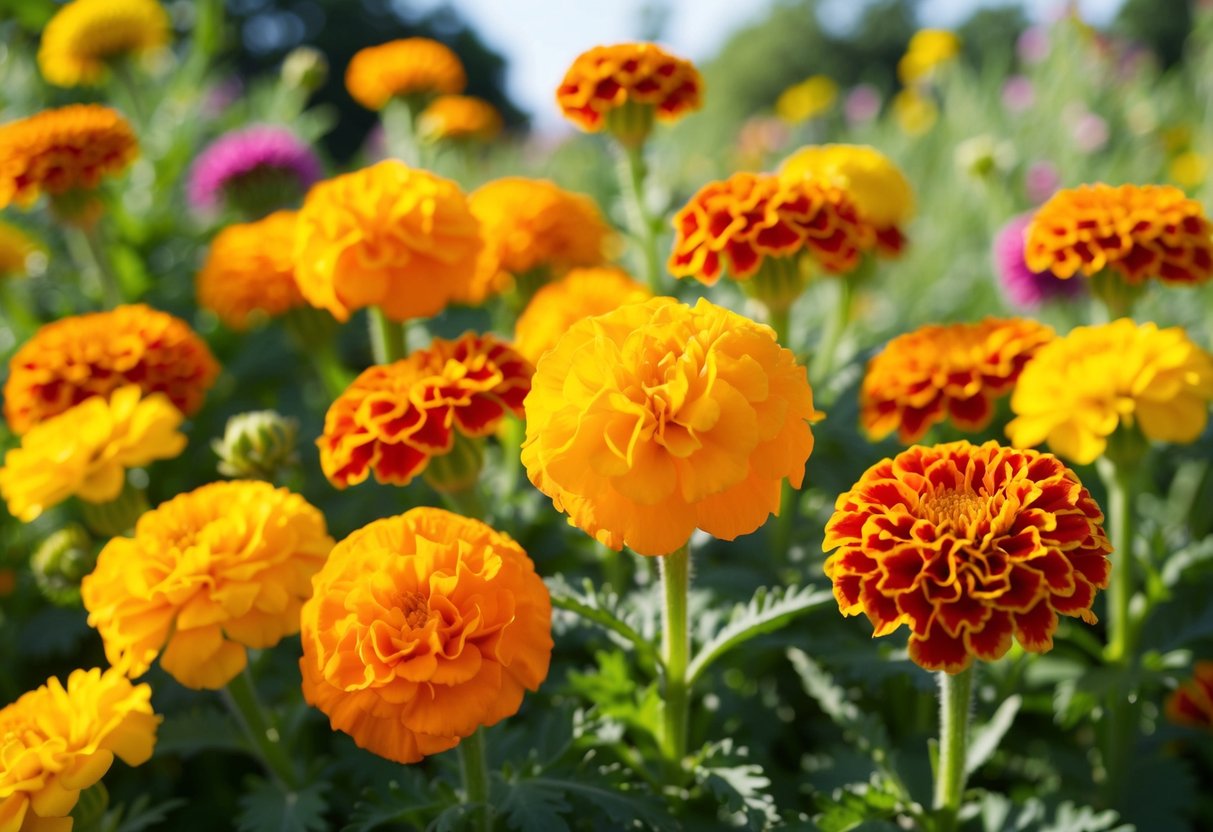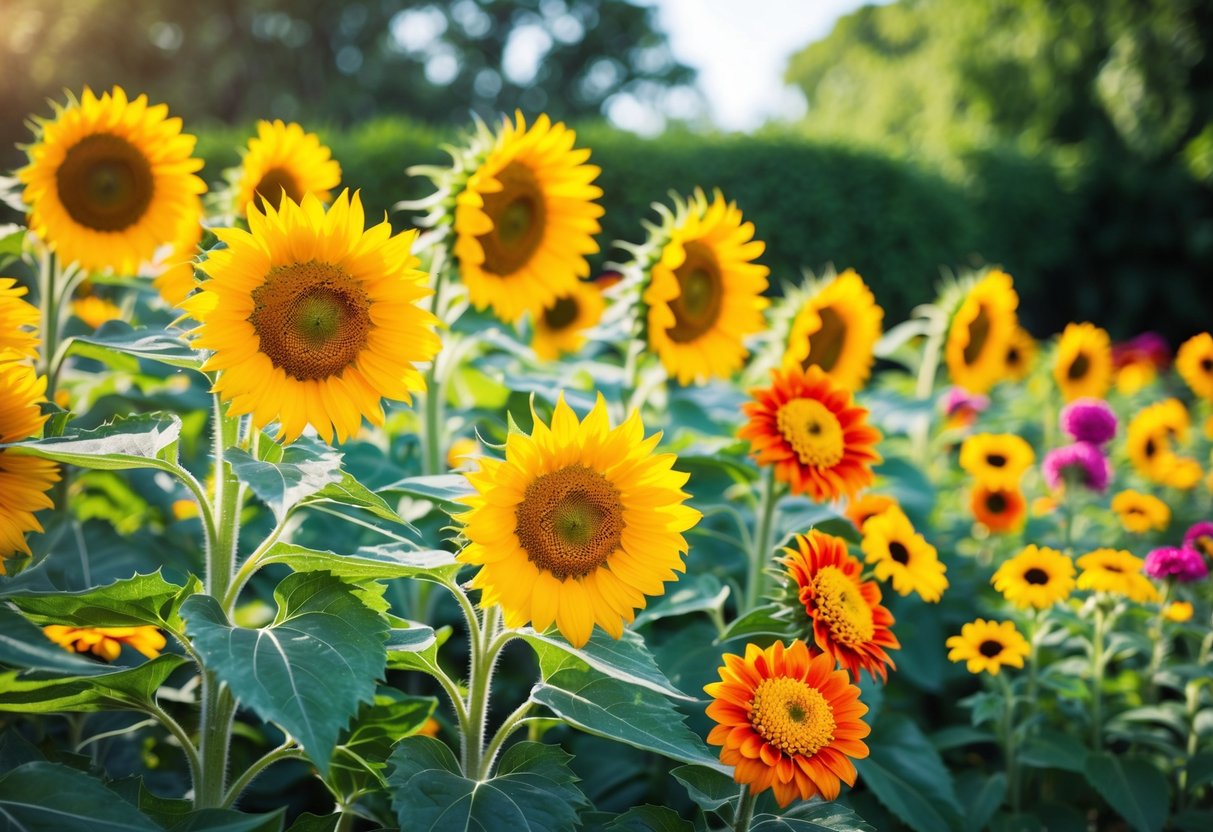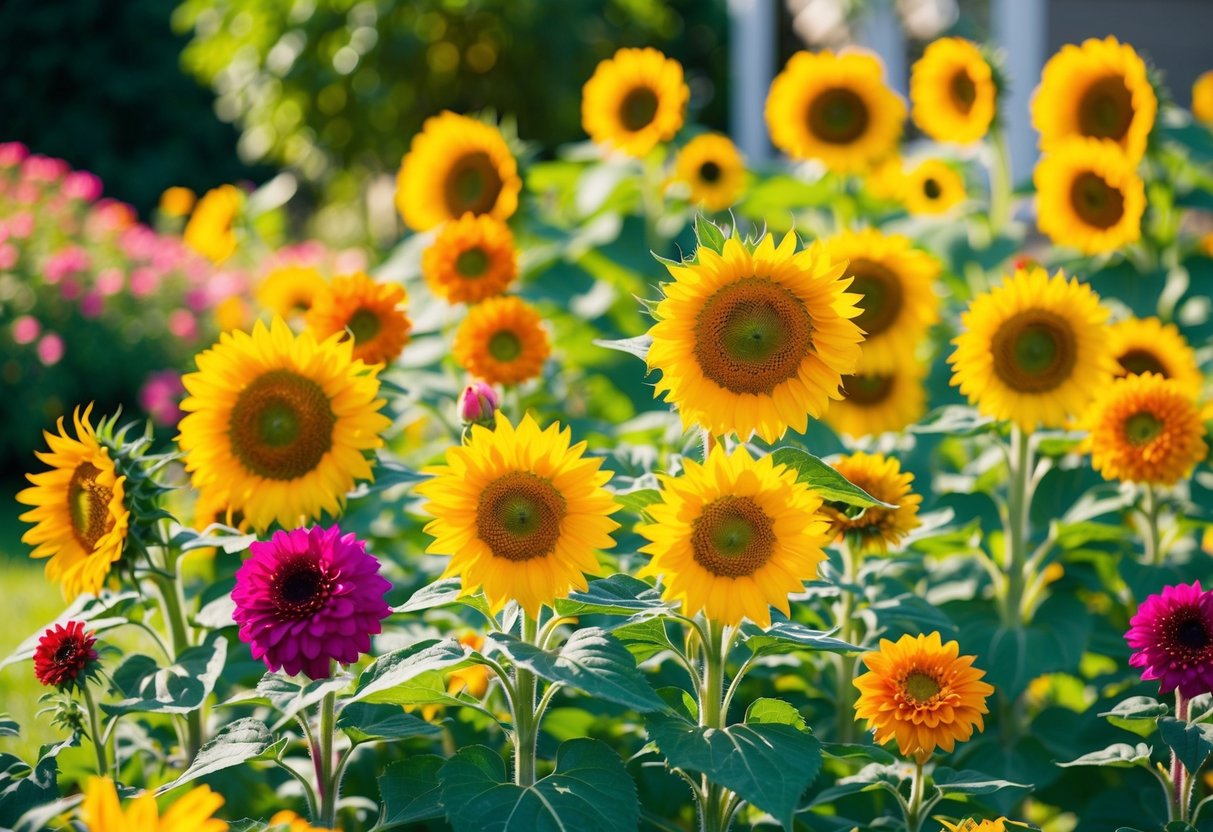What Flowers Are Good for Sun and Heat? Top Picks for Your Garden
Gardening in hot climates can be a challenge, but it doesn’t have to be a struggle. With the right choice of plants, your garden can flourish even under the sun’s intense rays. Choosing flowers like cosmos, crepe myrtle, and yarrow ensures your garden will thrive in full sun and heat. These plants not only survive but flourish when given ample sunlight.

Imagine your garden filled with vibrant hues and attracting butterflies and bees. Flowers like nasturtium and dianthus are perfect for adding color and charm to your outdoor space. They’re not only beautiful but can handle the summer heat with ease.
Embrace the sunny days by planting heat-loving flowers that will make your garden the talk of the neighborhood. Whether you have a window box or a larger garden, these hardy choices will ensure your outdoor space remains lush and lively all season long. Your garden deserves the best, and these sun-loving plants deliver.
Getting Started with Sun and Heat Tolerant Flowers

Choosing flowers that love the sun and can withstand high heat is crucial for a vibrant summer garden. You’ll need to understand your garden’s light conditions and select the right plants.
Understanding Full Sun and Heat Conditions
Full sun means your garden spot gets at least six hours of direct sunlight daily. This is great for sun-loving flowers. High heat often comes with full sun, especially in the summer. You need to choose plants that won’t wilt or die when the temperature rises.
Look for plants that thrive in these hot conditions. Many flowers like marigolds and zinnias are perfect because they can handle both the light and heat. Durability is key.
Know your local climate as well. Areas with dry heat might need flowers that are not only sun-loving but also drought-tolerant. It’s important to understand your garden’s specific sun and heat situation to make the best choices.
The Importance of Selecting the Right Flowers
Picking the right flowers for heat is important for a successful garden. Certain flowers like cosmos and canna lilies do well in bright and hot places.
Make a list of flowers known to thrive in full sun and high heat. Think about their colors and blooming periods. This helps keep your garden bright all summer.
Don’t forget to check the care needs of your choices. Some flowers might need a bit more water, even if they handle sun well. Select a variety of plants to create a diverse and visually pleasing garden that stands strong in hot weather.
Popular Annuals for Sunshine and Warmth

Choosing the right flowers for sunny, hot locations can make a big difference in your garden’s success. Some annuals not only withstand intense sunlight but also thrive in the heat. You’ll discover colorful options like marigolds, zinnias, and petunias which are perfect for bright spots.
Marigolds: Vibrant and Sunny Blooms
Marigolds are a favorite for sunny gardens. Their bright yellow and orange flowers bring a cheerful touch to any spot. They are heat-tolerant annuals that continue to bloom even in the hottest months.
These flowers are also known to repel pests, making them a smart choice for companion planting. You can grow them easily from seeds or transplants, and they require minimal care. Just provide well-drained soil and moderate watering to keep them thriving. Marigolds work well in pots or garden beds, adding a pop of color wherever you plant them.
Zinnias: A Colorful Parade in High Temperatures
Zinnias bring an incredible array of colors and shapes to sunny gardens. They are known for their ability to flourish even in high temperatures. From bright pinks to bold reds, zinnias offer a striking variety of hues and work well either in beds or containers.
You can easily grow them from seeds. They perform best in well-drained soil with regular watering, especially during dry spells. Zinnias attract butterflies, adding extra life to your garden space. With minimal effort, these annuals can fill your garden with energy and charm all summer long.
Petunias: Cascading Beauty for Sunny Spots
Petunias are ideal for adding a cascading effect to your garden. Their blooms come in many colors, from deep purples to soft whites. They do well in hanging baskets, window boxes, or as border plants. Petunias are sun-loving and perform best in full sunlight, consistently blooming throughout the season.
Regular watering helps them look their best, and they benefit from occasional deadheading to promote new blooms. Petunias are easy to maintain and can bring a lush, vibrant look to any sunny garden. Mix different varieties for a fantastic display of color and texture.
Perennials That Thrive in the Heat

When planning a garden in sunny, hot climates, choosing perennials that can handle the heat is key. These plants not only survive but also thrive, adding beauty and color to your garden. Below, you’ll find some hardy options that bring both charm and resilience to your outdoor space.
Lavender: Fragrance and Durability
Lavender is a wonderful addition to any sunny garden. Known for its pleasant fragrance, lavender can transform your space into a calm oasis. This plant loves full sun and grows well in dry, well-drained soil. Lavender is both drought-tolerant and deer-resistant, making it easy to care for.
Make sure to plant it in an area where it can enjoy plenty of sunlight. With its lovely purple flowers, lavender is perfect for creating colorful borders or simply adding a touch of elegance to your garden beds. Plus, lavender attracts beneficial insects like bees, helping to pollinate other plants in your garden while providing a delightful sensory experience.
Coneflowers: Hardy and Attractive to Pollinators
Coneflowers, often recognized by their daisy-like appearance, are favorites for hot weather. These sun-loving perennials are not only heat and drought-tolerant, but they also attract pollinators like bees and butterflies. They come in various shades, though the purple coneflower is particularly popular.
Coneflowers are easy to grow and can adapt to many soil types, as long as they are well-drained. Their flowers bloom throughout the summer and sometimes into early fall, providing long-lasting color. Plant them in groups for a more impactful visual display, and enjoy the lively presence of colorful butterflies around your garden.
Salvias and Sages: Resilient and Rich in Color
Salvias and sages are standout choices when selecting perennials for heat. These plants offer vibrant colors ranging from deep purple to striking blue hues. Russian sage is particularly known for its resilience and can handle the hottest days with ease.
These plants prefer full sun and well-draining soil. They are also drought-tolerant, which means they require less maintenance. The tall, slender blooms of salvias create a beautiful backdrop in mixed borders or stand alone as striking focal points. Plus, their rich colors attract hummingbirds, adding movement and life to your garden space.
Flower Varieties for Pollinator Gardens

Creating a pollinator garden provides essential habitats for bees, butterflies, and other pollinators. Choosing the right flowers can enhance your garden’s beauty and support the local ecosystem.
Bee Balm and Butterfly Weed: A Haven for Winged Visitors
Bee Balm and Butterfly Weed are excellent for attracting pollinators like bees and butterflies. Bee Balm is a vibrant flower known for its aromatic scent, which bees love. It’s a perennial that blooms from July to late summer. The bright red, pink, or purple flowers make it a beautiful addition to your garden.
Butterfly Weed, a member of the milkweed family, is another must-have. It’s especially appealing to monarch butterflies. Its orange flower clusters bloom in mid to late summer, providing a crucial food source. These flowers thrive in well-drained soil and full sun, making them ideal for your sun-loving garden.
Black-Eyed Susan and Coreopsis: Bright and Beneficial
Black-Eyed Susan and Coreopsis are perfect for adding a splash of color while supporting pollinators. Black-Eyed Susan, with its golden petals and dark center, attracts a variety of pollinators, including bees and butterflies. It’s a hardy flower that blooms from mid-summer to early fall and thrives in full sun.
Coreopsis, known for its daisy-like, sunny flowers, is another favorite. The blooms come in shades of yellow, gold, and red. This flower is not only appealing but also drought-tolerant, making it easy to grow in hot climates. It provides nectar for many pollinators, helping maintain a healthy garden ecosystem.
Caring for Your Sun-Loving Flowers

Caring for sun-loving flowers involves precise watering and the right soil conditions to ensure vibrant blooms. Proper techniques lead to lush and colorful displays.
Watering Strategies for Resilient Blooms
Water plays a crucial role when tending to sun-loving flowers in your sun-drenched garden. It’s important to water deeply but less frequently to encourage strong root growth. Mornings are ideal for watering, as they allow moisture to reach the roots before the day gets too hot. This method helps prevent evaporation and diseases caused by wet foliage overnight.
In container gardening, pay attention to soil moisture levels. Containers can dry out quickly, especially in full sun. Consider using self-watering pots to maintain consistent moisture. Mulching around the base of plants also helps retain water and keeps the roots cool. For flowering perennials, consider their specific needs. Some might prefer more moisture, while others thrive in drier conditions. Adjust your watering schedule accordingly to keep your blooms healthy and blooming proudly.
Soil and Fertilization Techniques
Choosing the right soil mix is vital for supporting your flowers. Plants in containers need well-draining soil. To improve drainage for container gardening, add sand or perlite. For a sun-drenched garden, incorporate organic matter like compost to enrich the soil, providing nutrients for the plants.
When it comes to fertilization, use a balanced, slow-release fertilizer during the growing season. This helps provide consistent nutrients. Flowering perennials, in particular, benefit from periodic feeding to sustain their reblooming capabilities. Be cautious not to over-fertilize, as this can lead to lush foliage but fewer flowers.







